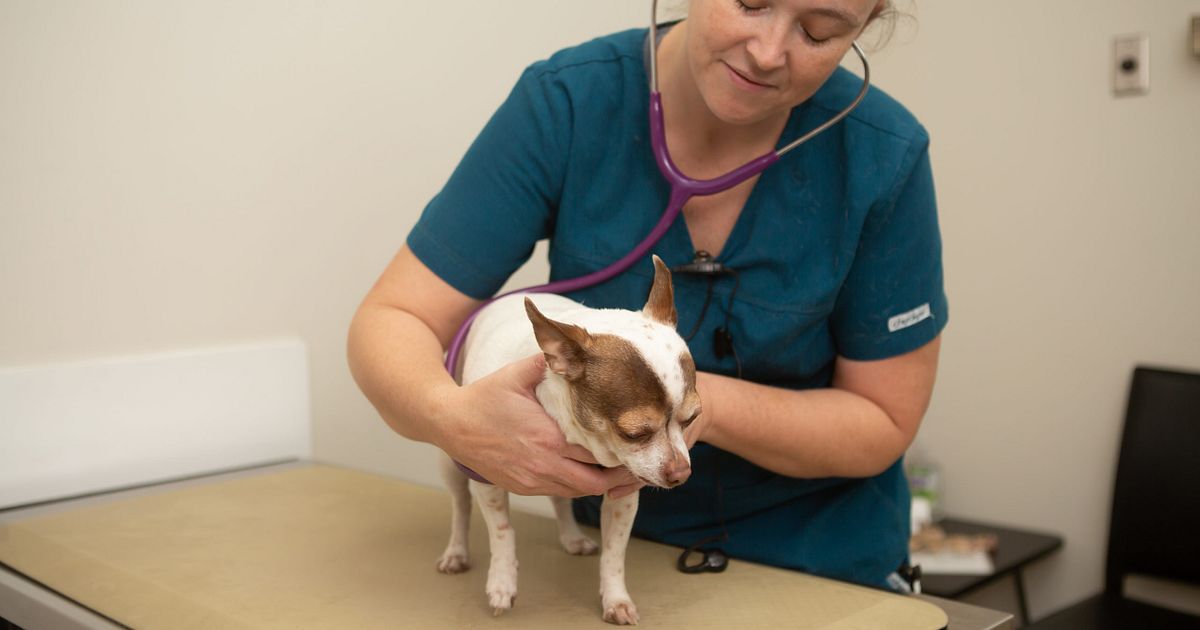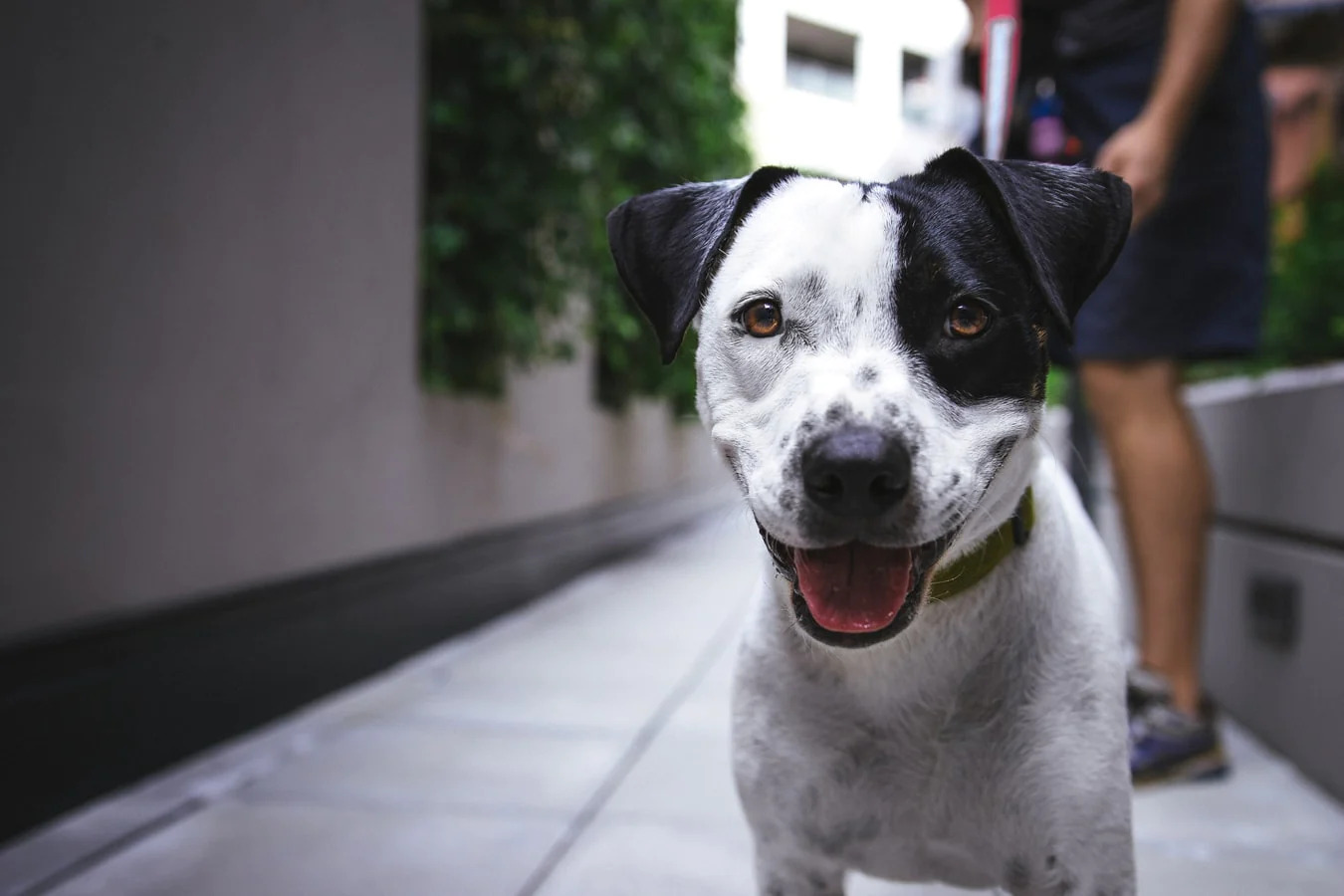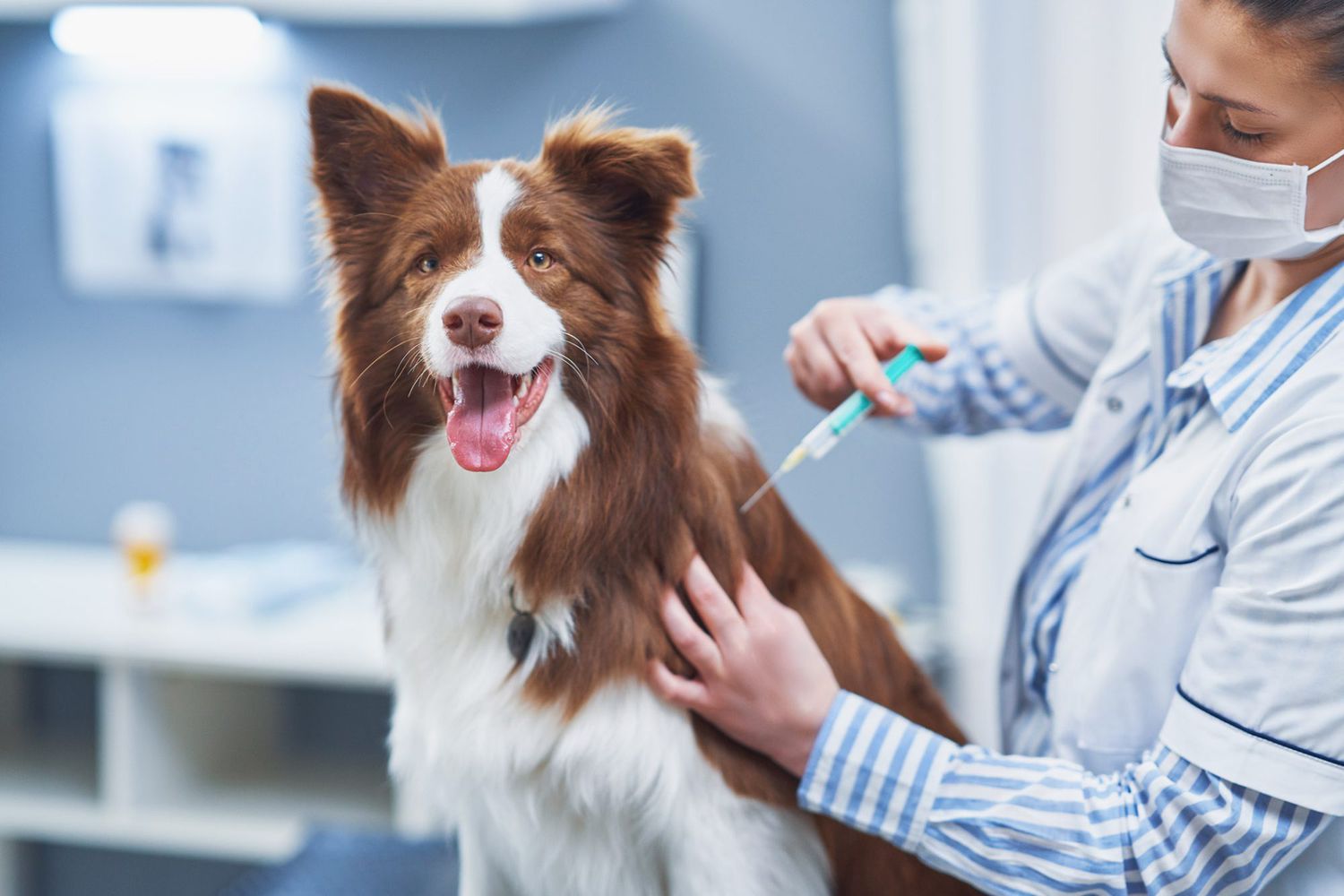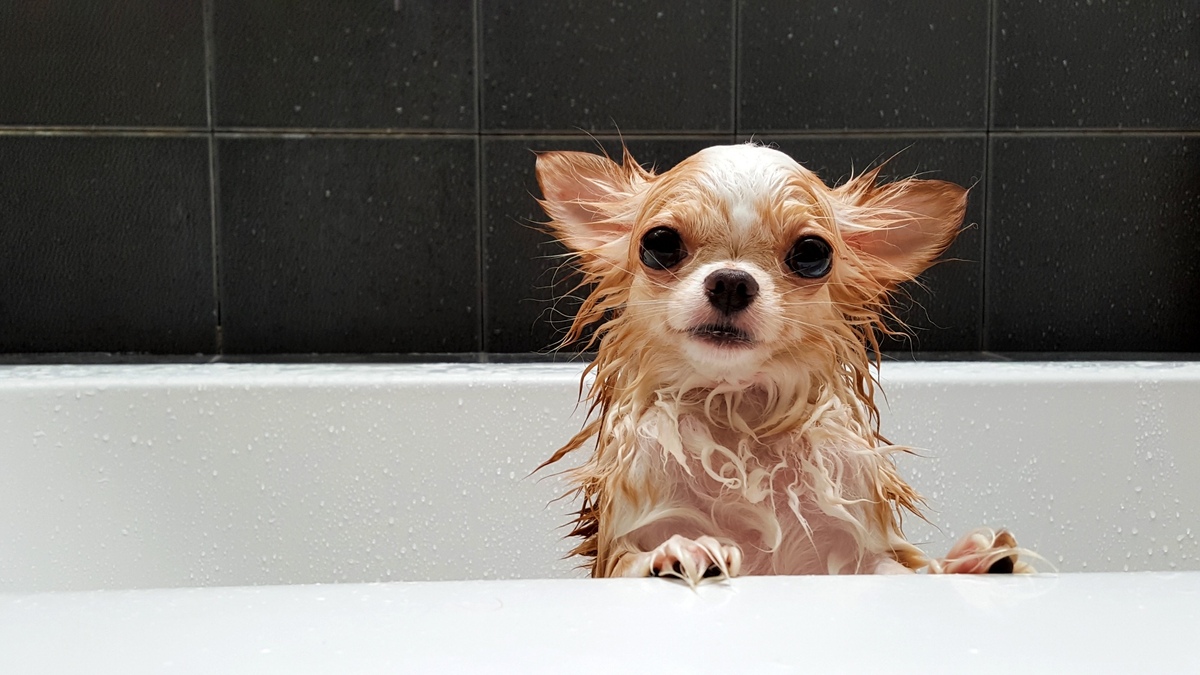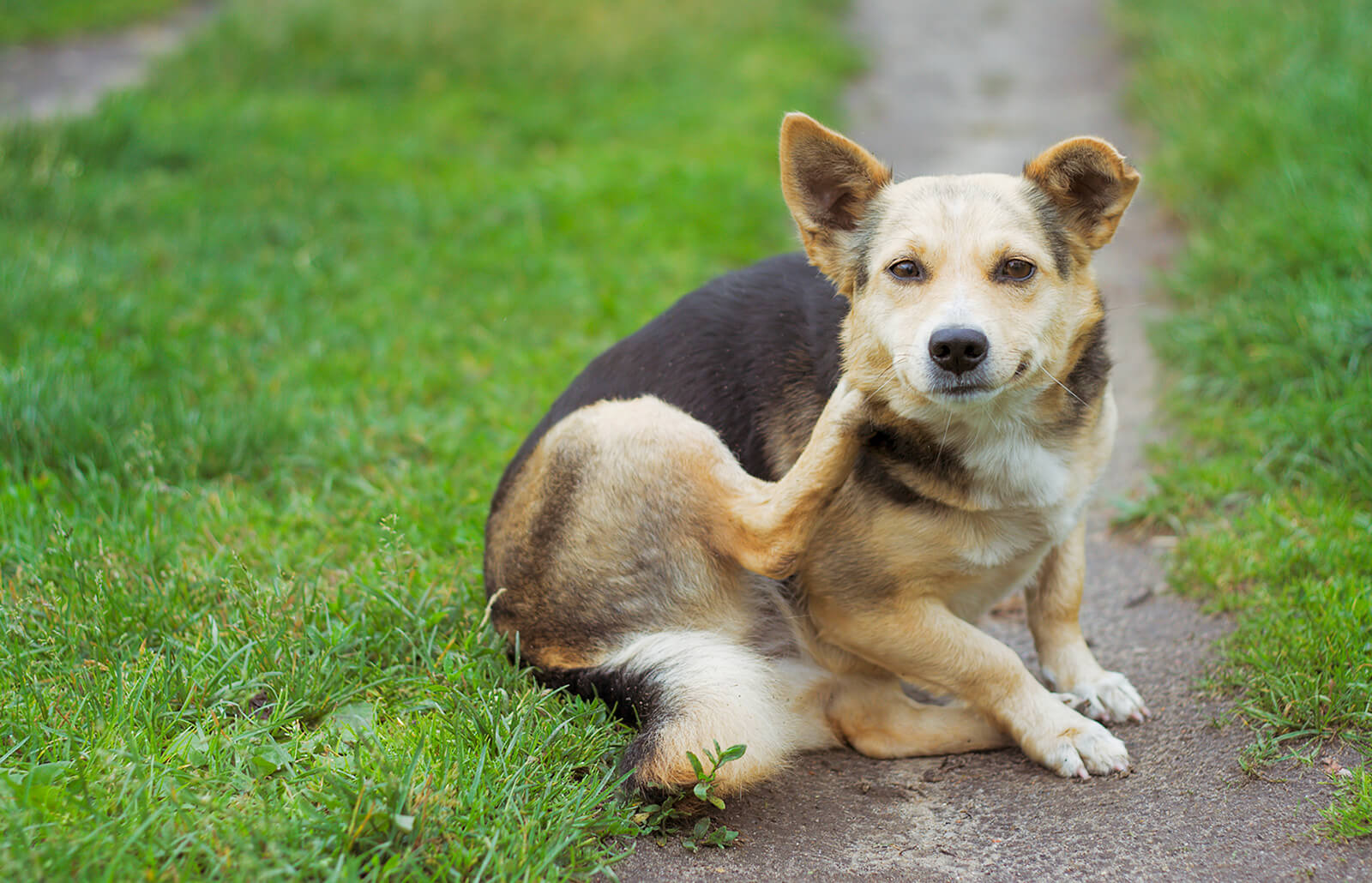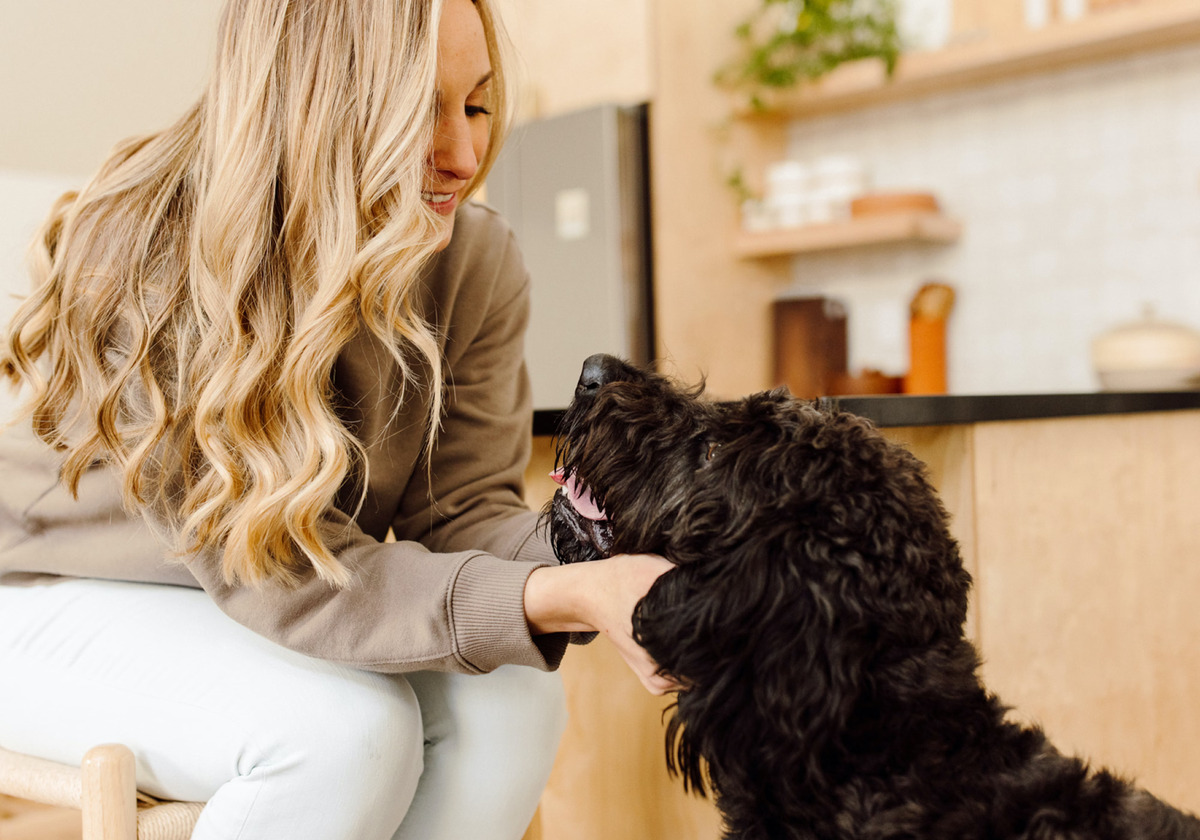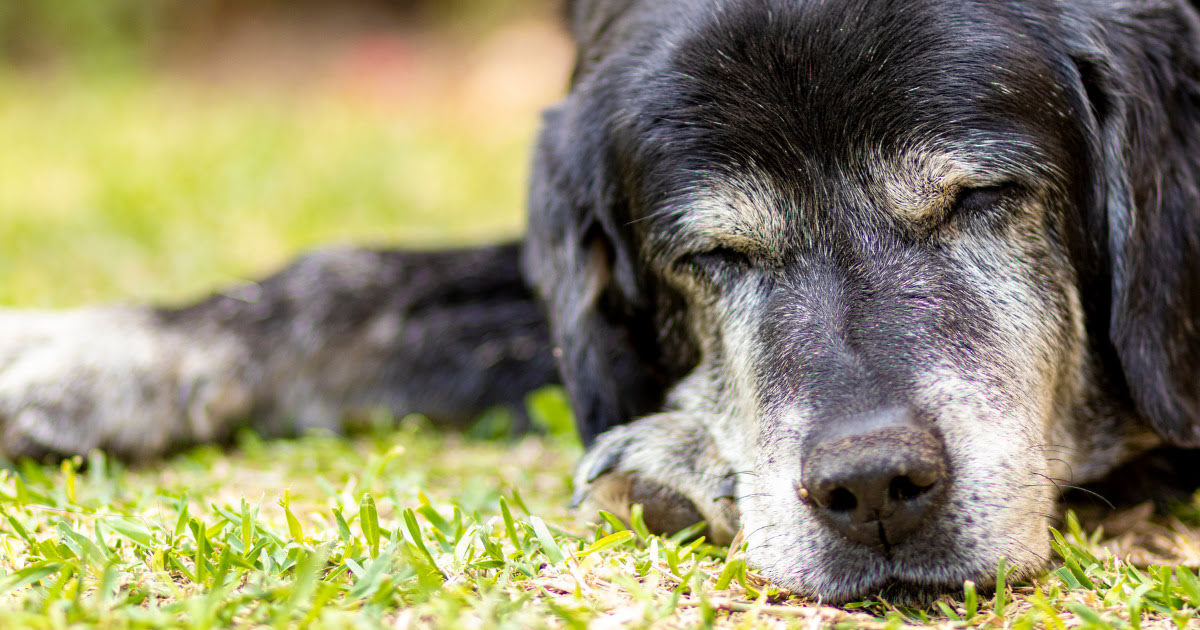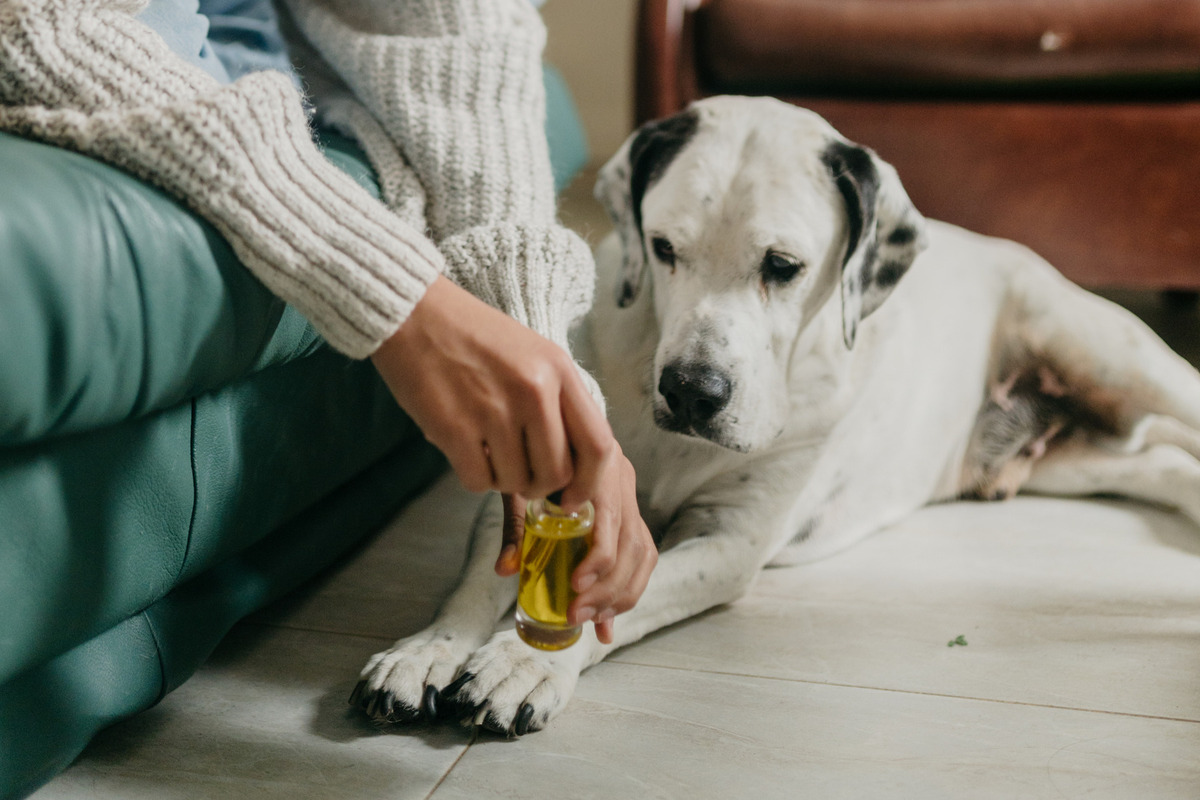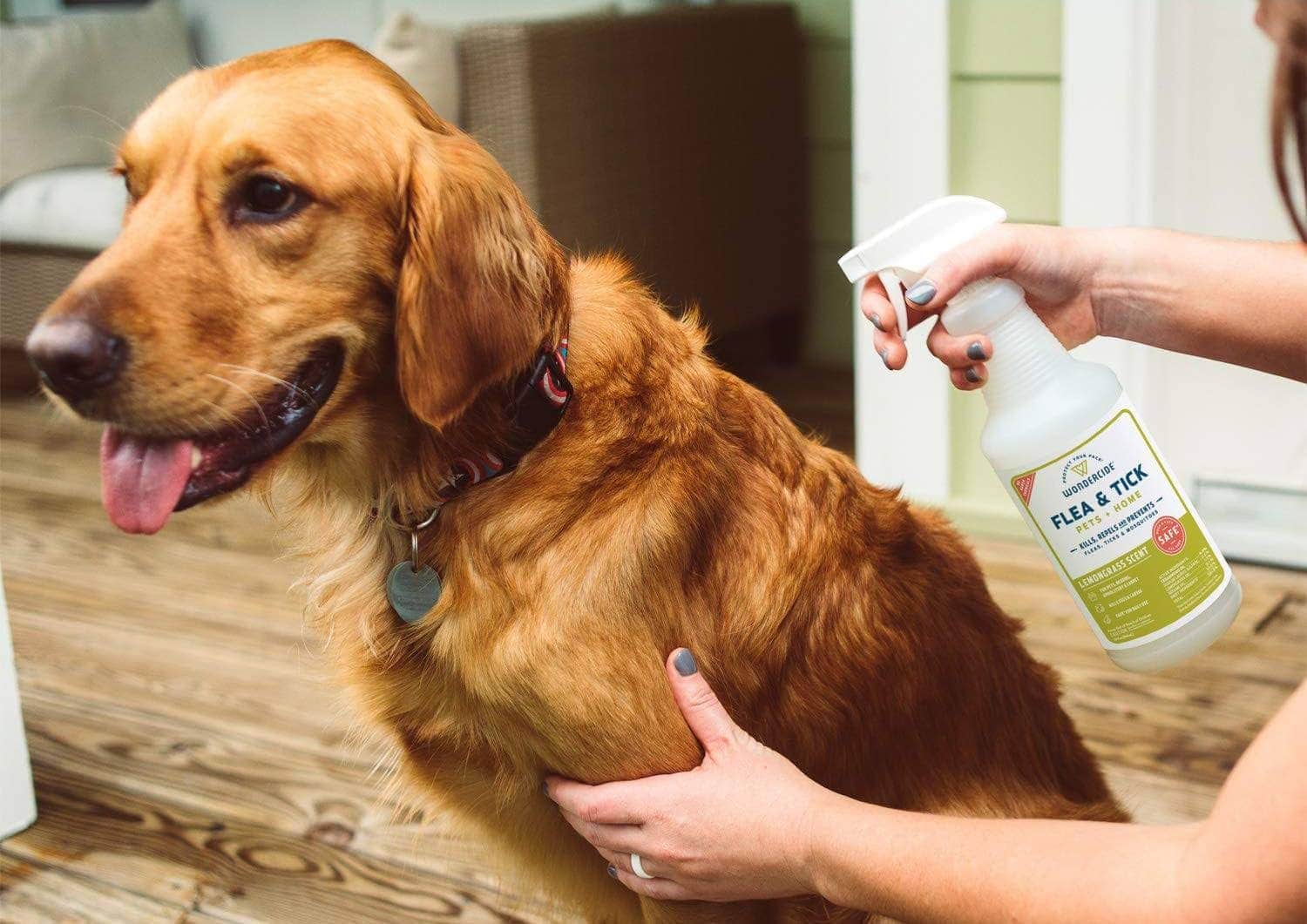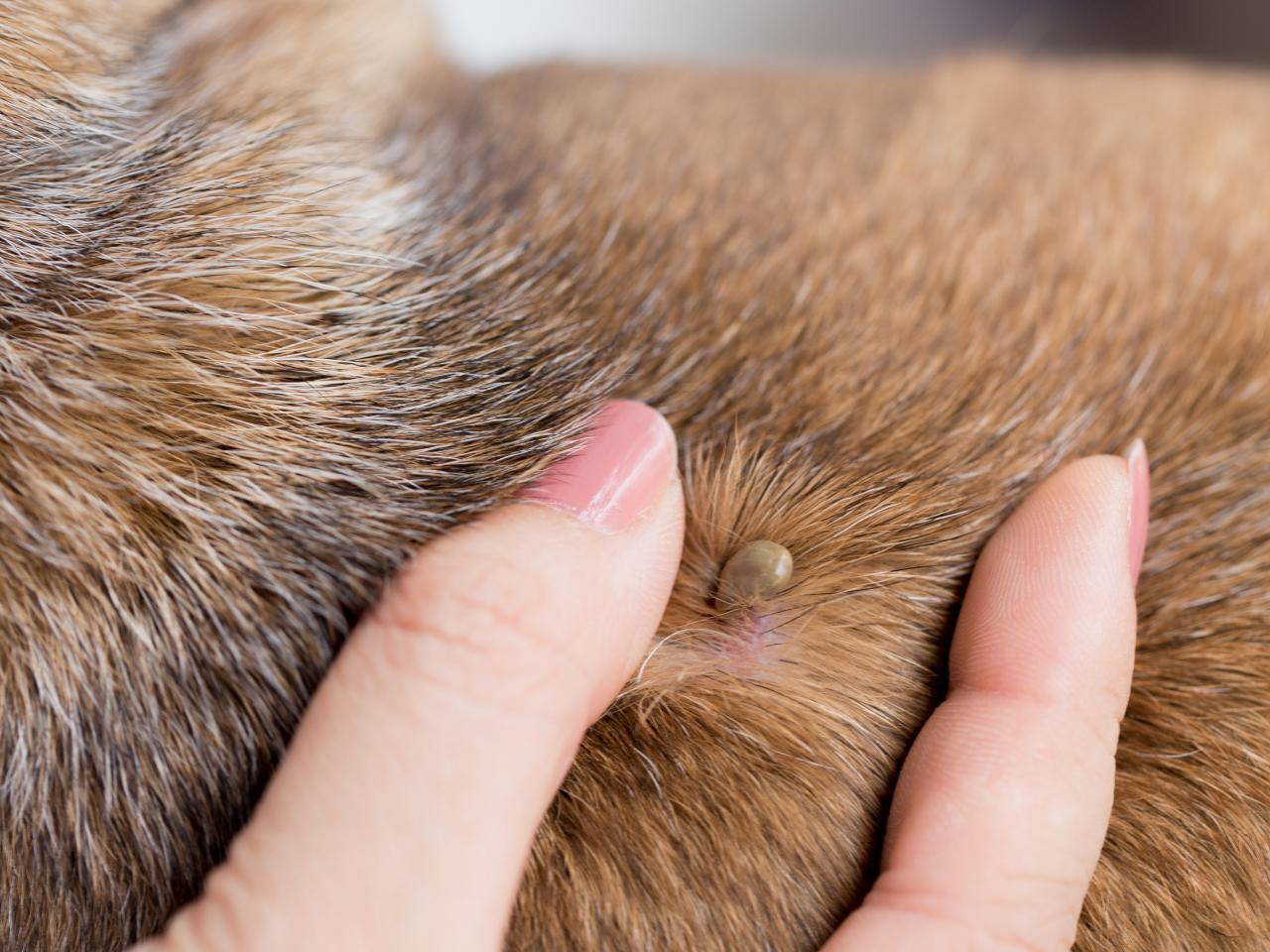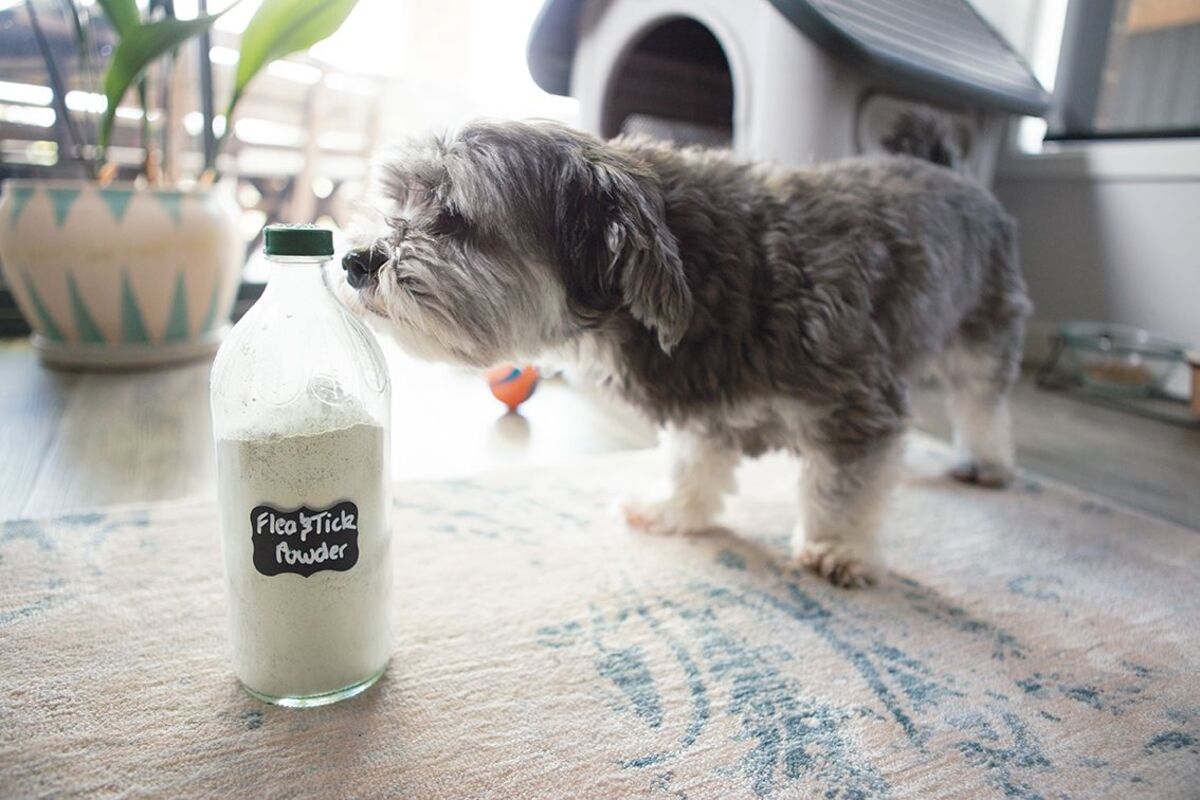Home>Health & Wellness>Common Health Issues>When Can You Bathe A Dog After Flea And Tick Medication
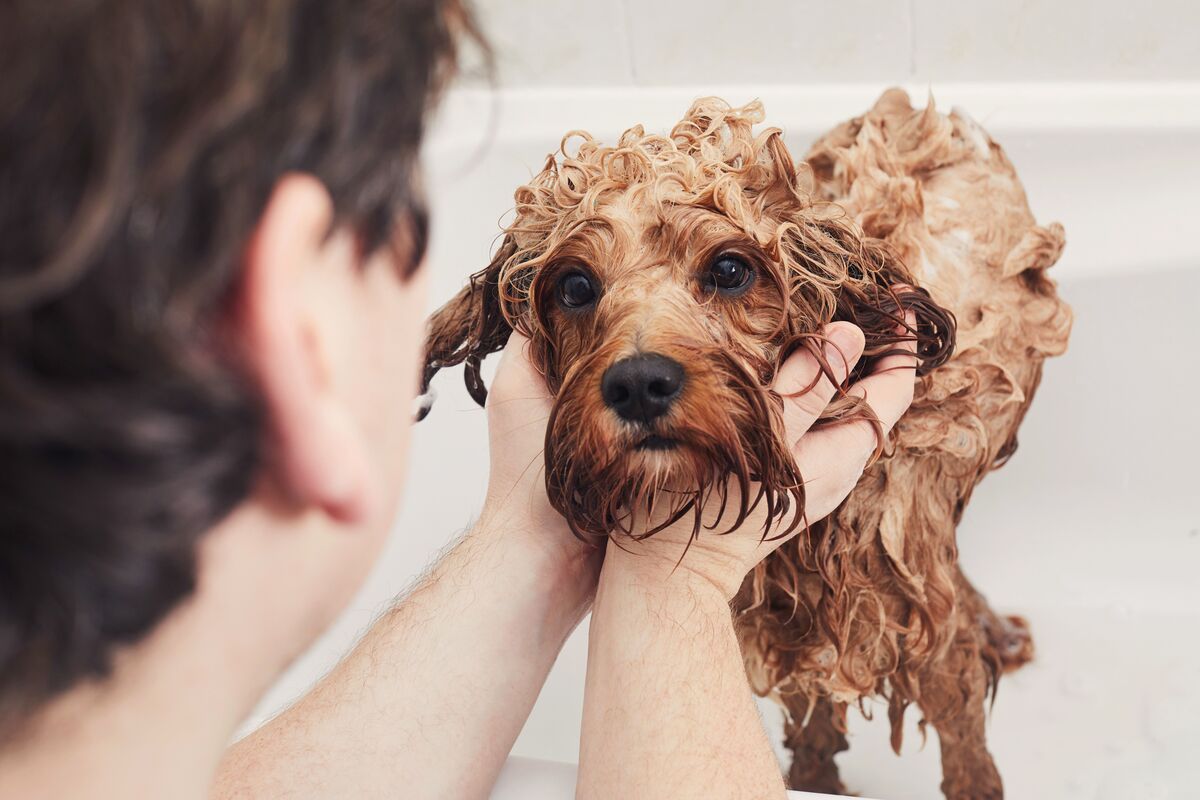

Common Health Issues
When Can You Bathe A Dog After Flea And Tick Medication
Published: February 5, 2024
Learn when it's safe to bathe your dog after applying flea and tick medication. Find solutions to common health issues for your furry friend.
(Many of the links in this article redirect to a specific reviewed product. Your purchase of these products through affiliate links helps to generate commission for Pawsomeoldies.com, at no extra cost. Learn more)
Table of Contents
Introduction
Bathing your furry friend is an essential part of maintaining their hygiene and overall well-being. However, when it comes to bathing your dog after applying flea and tick medication, there are important considerations to keep in mind. Understanding the timing and potential risks associated with bathing after applying these medications is crucial for ensuring the effectiveness of the treatment and the safety of your pet.
In this comprehensive guide, we will delve into the intricacies of bathing your dog after flea and tick medication application. From understanding the mechanisms of flea and tick medication to the optimal waiting period before bathing your dog, we will cover all the essential information you need to know. Additionally, we will explore the potential risks of bathing your dog too soon after applying flea and tick medication and provide valuable tips for ensuring a safe and effective bathing experience for your canine companion.
By the end of this article, you will have a clear understanding of the best practices for bathing your dog after flea and tick medication application, empowering you to make informed decisions that prioritize your pet's health and well-being. So, let's embark on this insightful journey to uncover the optimal approach to bathing your dog after flea and tick medication application.
Understanding Flea and Tick Medication
Flea and tick medications are essential tools in the battle against these pesky parasites that can wreak havoc on your dog's health. These medications come in various forms, including topical treatments, oral medications, and collars, each designed to target and eliminate fleas and ticks through different mechanisms.
Topical treatments, such as spot-on solutions, are applied directly to the skin, usually between the shoulder blades, where your dog cannot lick it off. These treatments work by spreading across the skin's surface and through the hair follicles, effectively targeting fleas and ticks upon contact. On the other hand, oral medications are ingested by your dog and work systemically, meaning they travel through the bloodstream to kill fleas and ticks when they bite your pet. Additionally, flea and tick collars release active ingredients that repel and kill fleas and ticks, providing long-lasting protection.
The active ingredients in flea and tick medications vary, with common components including imidacloprid, fipronil, permethrin, and pyrethroids. These ingredients disrupt the nervous system of fleas and ticks, leading to paralysis and ultimately death. Some medications also contain insect growth regulators (IGRs) that prevent flea eggs and larvae from developing, further disrupting the flea life cycle.
It's important to note that flea and tick medications are formulated specifically for dogs and should never be used on other pets, such as cats, without consulting a veterinarian. Additionally, some medications are designed for specific weight ranges, so it's crucial to select the appropriate dosage based on your dog's size to ensure safety and effectiveness.
Understanding the type of flea and tick medication you are using, its mode of action, and the specific instructions provided by the manufacturer or your veterinarian is essential for ensuring proper application and maximizing its efficacy. With this foundational knowledge, you can proceed to the next crucial aspect: the waiting period before bathing your dog after applying flea and tick medication.
Waiting Period for Bathing After Applying Flea and Tick Medication
After applying flea and tick medication to your dog, it's essential to consider the waiting period before bathing them. This waiting period is crucial for ensuring the effectiveness of the medication and preventing potential wash-off or dilution of the active ingredients. The specific waiting period can vary depending on the type of medication and the manufacturer's guidelines, so it's important to carefully review the product instructions or consult your veterinarian for personalized advice.
In general, most topical flea and tick medications require a waiting period of 24 to 48 hours before bathing your dog. This timeframe allows the active ingredients to be absorbed into the skin and distributed throughout the body, maximizing their impact on fleas and ticks. Bathing your dog too soon after applying topical medication can wash away the product before it has had a chance to take effect, compromising its efficacy.
For oral flea and tick medications, the waiting period before bathing your dog may also range from 24 to 48 hours. Since these medications work systemically, allowing them ample time to be absorbed and circulated within your dog's body is essential for achieving the desired outcome. Similarly, flea and tick collars often require a brief waiting period before exposure to water to ensure that the active ingredients remain potent and effective.
It's important to note that the waiting period for bathing after applying flea and tick medication is not only about preserving the product's efficacy but also about safeguarding your dog's well-being. Bathing too soon after application can increase the risk of skin irritation or adverse reactions, as the skin may be more sensitive during this period.
While adhering to the recommended waiting period is crucial, it's equally important to consider your dog's specific needs and circumstances. For instance, if your dog becomes excessively dirty or encounters a situation that necessitates immediate bathing within the waiting period, it's advisable to consult your veterinarian for guidance on how to proceed without compromising the effectiveness of the flea and tick medication.
By understanding and respecting the waiting period for bathing after applying flea and tick medication, you can ensure that your dog receives the full benefits of the treatment while minimizing potential risks. This proactive approach contributes to a comprehensive and responsible care routine for your beloved canine companion.
Risks of Bathing Too Soon
Bathing your dog too soon after applying flea and tick medication can pose significant risks that may compromise the effectiveness of the treatment and potentially impact your pet's well-being. Understanding these risks is essential for making informed decisions and ensuring the optimal outcome of the flea and tick control regimen.
One of the primary risks of bathing your dog too soon after applying flea and tick medication is the potential wash-off or dilution of the active ingredients. Topical flea and tick medications are designed to be absorbed into the skin and spread across the body, effectively targeting and eliminating fleas and ticks upon contact. However, bathing your dog shortly after application can wash away these crucial active ingredients before they have had a chance to take effect. This can significantly reduce the efficacy of the treatment, leaving your dog vulnerable to flea and tick infestations.
In addition to compromising the effectiveness of the medication, bathing your dog too soon after application can also lead to skin irritation and potential adverse reactions. The skin may be more sensitive during the initial period after applying flea and tick medication, and exposure to water and bathing products can exacerbate this sensitivity. This can result in discomfort for your dog and may even lead to skin inflammation, itching, or other dermatological issues.
Furthermore, bathing your dog too soon after applying flea and tick medication may disrupt the balance of essential oils on the skin and coat. These natural oils play a crucial role in maintaining skin health and providing a protective barrier against environmental elements. Premature bathing can strip away these oils, potentially leading to dryness, flakiness, and an increased susceptibility to skin issues.
Another risk to consider is the potential for reduced adherence of the flea and tick medication to the skin and coat. When the medication is applied, it needs time to adhere and be absorbed, allowing the active ingredients to exert their full effects. Bathing too soon can interfere with this process, reducing the medication's ability to provide long-lasting protection against fleas and ticks.
By recognizing and acknowledging these risks, pet owners can make informed decisions regarding the timing of bathing after applying flea and tick medication. It's essential to prioritize the well-being of your dog by adhering to the recommended waiting period and seeking guidance from a veterinarian if specific circumstances necessitate deviation from the standard protocol.
Understanding the potential risks of bathing too soon after applying flea and tick medication empowers pet owners to take a proactive and responsible approach to their dog's care. By prioritizing the effectiveness of the treatment and the well-being of their canine companions, pet owners can contribute to a healthy and thriving environment for their beloved pets.
Tips for Bathing Your Dog After Flea and Tick Medication
After the essential waiting period has elapsed, and you are ready to bathe your dog following flea and tick medication application, there are several crucial tips to keep in mind to ensure a safe and effective bathing experience for your canine companion.
-
Use a Gentle Shampoo: When bathing your dog after flea and tick medication application, opt for a gentle, pet-friendly shampoo specifically formulated for dogs. Avoid using harsh or medicated shampoos, as these may interact with the residual effects of the flea and tick medication or cause skin irritation. Look for shampoos that are free from harsh chemicals and fragrances, as these can be particularly soothing for your dog's skin.
-
Ensure Thorough Rinsing: Proper rinsing is essential to remove all traces of shampoo and any residual flea and tick medication from your dog's coat. Inadequate rinsing can lead to skin irritation and discomfort for your pet. Take the time to thoroughly rinse your dog's coat, ensuring that no shampoo or product residue remains.
-
Avoid Scrubbing Vigorously: While it's important to cleanse your dog's coat thoroughly, avoid vigorous scrubbing or rubbing, especially in areas where the flea and tick medication was applied. Gentle massaging motions can effectively clean your dog's coat without causing unnecessary irritation to the skin.
-
Pat Dry Gently: After bathing, gently pat your dog dry with a soft towel. Avoid vigorous rubbing, as this can cause friction and potentially exacerbate skin sensitivity, especially after the application of flea and tick medication. If your dog tolerates it well, you can use a blow dryer on a low, cool setting to further dry their coat.
-
Monitor for Adverse Reactions: Following the bath, closely monitor your dog for any signs of skin irritation, itching, or discomfort. If you notice any unusual reactions, such as redness, excessive scratching, or skin inflammation, contact your veterinarian promptly for guidance.
-
Maintain Regular Application Schedule: Consistency is key when it comes to flea and tick control. After bathing your dog, ensure that you adhere to the regular application schedule recommended for the specific flea and tick medication you are using. This consistency is vital for sustaining effective protection against fleas and ticks.
By incorporating these tips into your post-medication bathing routine, you can ensure that your dog receives a thorough and gentle cleansing while minimizing the potential for adverse reactions or interference with the flea and tick medication's efficacy. Prioritizing your dog's comfort and well-being during the post-medication bathing process contributes to a holistic approach to their care and hygiene.
Remember, always consult your veterinarian if you have any concerns or specific questions regarding bathing your dog after flea and tick medication application. Your veterinarian can provide personalized guidance based on your dog's unique needs and circumstances, further enhancing their overall health and happiness.
Conclusion
In conclusion, bathing your dog after applying flea and tick medication requires careful consideration of the waiting period, potential risks, and best practices to ensure a safe and effective bathing experience. Understanding the mechanisms of flea and tick medication, including topical treatments, oral medications, and collars, provides valuable insights into their mode of action and the importance of adhering to specific waiting periods before bathing your dog.
The waiting period for bathing after applying flea and tick medication is crucial for preserving the efficacy of the treatment and safeguarding your dog's well-being. By allowing the active ingredients to be absorbed and distributed within your dog's body, you maximize the medication's impact on fleas and ticks while minimizing the risk of wash-off or dilution.
Bathing your dog too soon after applying flea and tick medication poses significant risks, including potential wash-off of active ingredients, skin irritation, disruption of essential oils, and reduced adherence of the medication. Recognizing these risks empowers pet owners to make informed decisions that prioritize the effectiveness of the treatment and the comfort of their canine companions.
When the waiting period has elapsed, following essential tips for bathing your dog, such as using a gentle shampoo, ensuring thorough rinsing, and monitoring for adverse reactions, contributes to a safe and nurturing bathing experience. Consistency in maintaining the regular application schedule for flea and tick medication is vital for sustaining effective protection against these parasites.
Ultimately, the well-being of your dog is at the heart of every decision related to their care, including bathing after flea and tick medication application. By integrating knowledge, caution, and compassion into your approach, you can ensure that your dog receives the full benefits of flea and tick control while enjoying a comfortable and hygienic bathing routine.
Remember, consulting your veterinarian for personalized guidance and addressing any specific concerns related to bathing your dog after flea and tick medication application is an invaluable aspect of responsible pet ownership. By working in partnership with your veterinarian, you can navigate the nuances of post-medication bathing with confidence and care, contributing to a harmonious and thriving environment for your beloved pet.
